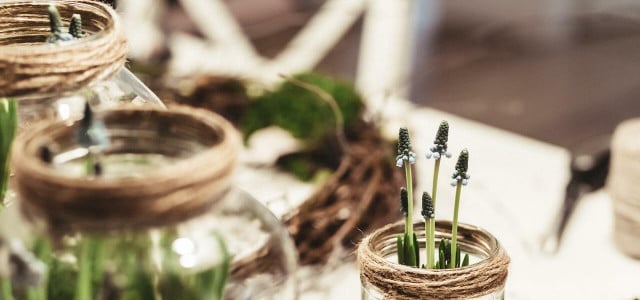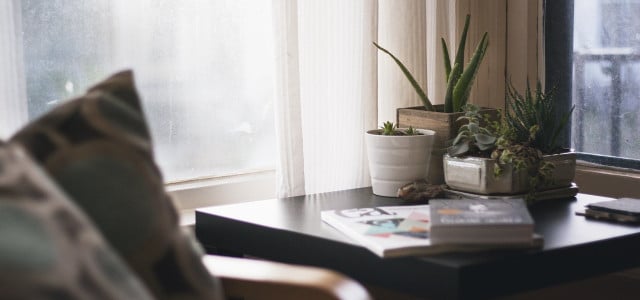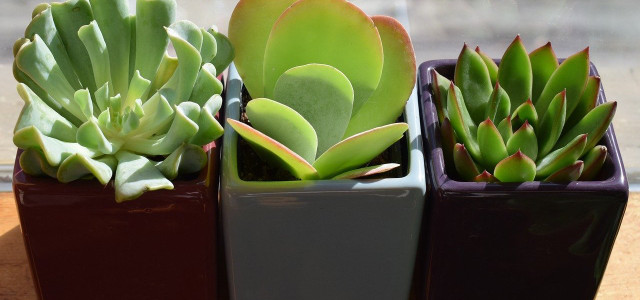Growing plants in jars is an uncomplicated, affordable and sustainable way of reusing old jars and bringing life and color to your home. Follow this guide for the nine best plants to grow in jars and start your own indoor garden.
There are a number of benefits to using jars for planting, which is why you should not hesitate to start your own jar-garden at home. Many plants that can be grown in jars are also edible. This means that your indoor jar-planting will supply you with an endless amount of fresh and delicious plants for you to enjoy, and save money on!
Plants in jars also look very nice when placed around your home. They are smaller, more delicate plants that can compliment an interior by being placed on windowsills, side-tables and even as table decorations for a party.
What is more, using old jars for planting is a great way to do some upcycling with your old glass jars that you might otherwise throw out. Plus, it saves you money from having to buy new pots every time you want to start planting.
Tips for Planting in Jars
Growing plants in jars could not be easier. But there are some steps you need to take beforehand to ensure the best possible growth and health for your jar-plants.
- Gather your jars. The wider the mouth of the jar, the better. This gives the plant more room to spread out and grow to its fullest and most beautiful.
- Drainage: Good drainage at the bottom of your jar is really important seeing as the only opening is through the mouth of the jar. Place some small stones or pebbles at the bottom of the jar so that the plant is raised above the rim. About ¼ full should work well here. Always look out for signs you’re overwatering your plants, so that you can fix the problem early.
- Soil. Good soil will really help your plants grow in jars, especially as many of the plants that can be grown in jars starting from seeds. Use starting soil here and fill your mason jar to the rim. If you are not growing your plant from the seed, inform yourself on what kind of soil the particular plant will grow well in.
Optional: Sowing the seeds. If you are planting from seed, now is the time to add your seeds and seedlings. For seeds, sprinkle them directly onto the soil before adding about ½ an inch of soil on top. For seedlings, use a small dowel or chopstick to carefully make a small hole and place the root ball inside. Cover the root ball with soil. Water the seeds/seedlings and place the jar on a bright windowsill where it can get at least six to seven hours of sunlight a day.
Now that your jars are prepped and ready to go, it is time to choose which plants you want to fill them with. Let’s have a look at which delicious and beautiful plants can be grown in jars easily and inexpensively.
1. Herbs
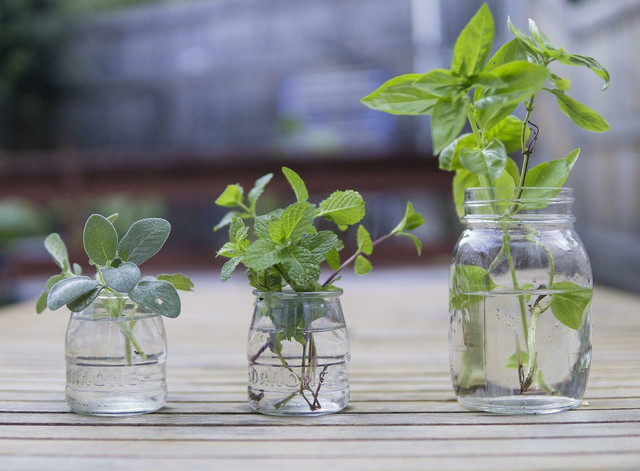
(Foto: CC0 / Pixabay / elle_kh)
Herbs are the most common plants to grow in jars because they are so easy and hassle-free. Almost every herb can be grown in a jar, but the most compatible are parsley, thyme, cilantro, basil, rosemary, and sage.
All you will need to ensure with growing herbs in jars is that the jar is big enough to allow room for more growth. The roots of herbs tend to be bigger than their top growth, so a big jar is important. Then place your jars somewhere they will receive lots of light, and reap the benefits of an endless supply of fresh herbs right at your fingertips. If you want to extend your kitchen herb garden with other plants that don’t necessarily grow well in jars, check out our guide on the topic.
Chives also work well for growing in a jar. For this herb however, it’s best to start the seeds off in an eco-friendlier alternative to a peat pot (like empty toilet paper rolls, or eggshells) rather than directly in the jar as this will start them off stronger. To transplant the established chive seedlings, simply place the seedlings on top of the soil in the jar before covering them firmly with added soil. Garlic Microgreen Chives grow really well in jars and are totally delicious.
If you have not only jars but also pots to work with, check out our comprehensive guide on how to grow a herb garden on your windowsill.
2. Cacti
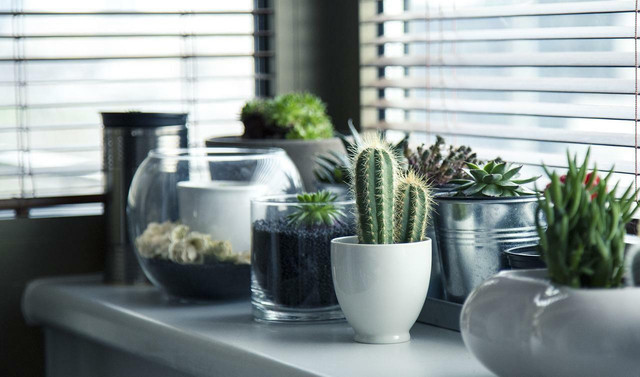


(Foto: CC0 / Pixabay / milivigerova)
Cacti require very little upkeep, and so can be grown in jars no problem! Simply add them to your filled jars and water them every week or two, depending on the size and type of cactus. Cacti look great dotted around the house and can last happily in jars for years. Learn how to safely repot a cactus for when you want to move them to a bigger or just a different jar.
3. Succulents
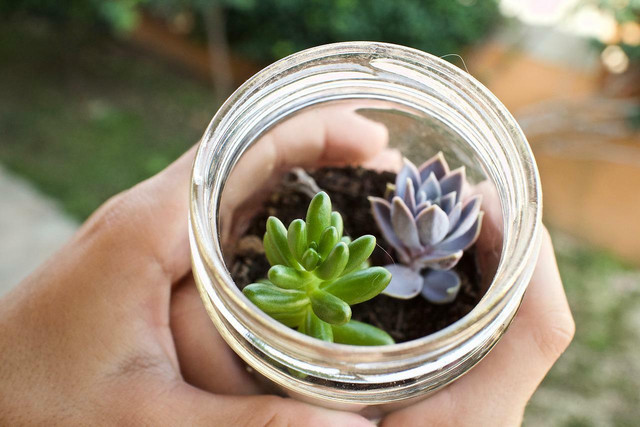


(Foto: CC0 / Pixabay / sweetlouise)
Just like cacti, succulents are also ideal plants for planting in jars. They last for a long time and need little to no upkeep. All you need to do is make sure your jar has a good amount of drainage at the bottom before you plant your succulents and enjoy watching them grow into their weird and wonderful shapes and colors. If you still have jars over and your succulents are growing healthily, you might want to learn how to propagate succulents so that you can fill up even more jars with the plants.
4. Tomatoes
For a more substantial plant you can grow and eat straight from a jar, tomatoes are your go-to. The secret to growing successful tomatoes in jars is the type of tomato. Cherry, Green Grape and Tiny Tim work really well here because they are smaller and so will fit the jar perfectly. If you’d like bigger fruits, you can try growing tomatoes in pots, for example on your balcony. Simply make sure to water your tomato plant every two to three days and enjoy fresh home-grown tomatoes straight from the vine.
5. Garlic
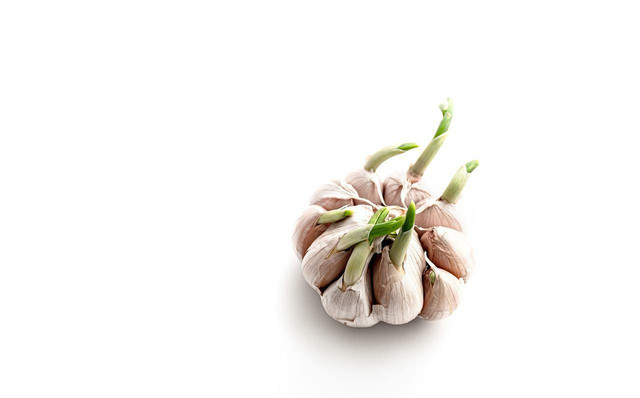


(Foto: CC0 / Pixabay / Ri_Ya)
Garlic is a great plant to grow in jars and can grow really well from just a clove. However, garlic plants grow beneath the soil, so you will need to first layer soil over your drainage pebbles before placing your garlic clove about halfway up the jar and covering it with more soil. The wider the jar, the better.
Garlic is also a cold weather plant, so when planted, place the jar in a cool and dry spot away from direct light and heat. Your garlic planting will only harvest one bulb, so do not expect a large crop of garlic. Growing garlic this way is perfect for anyone who lives alone or does not cook that much.
6. Aloe Vera
Aloe vera is known for its healing and nutritional benefits, so is a great plant to have around the house. You can plant and keep a small aloe vera plant in a jar and only need to water it every two weeks or so.
Aloe vera does grow quite large though, so when it starts to outgrow the jar, you will need to replant it into a bigger pot. Also look out for signs of overwatering in aloe plants to make sure it keeps growing healthy.
7. Pothos
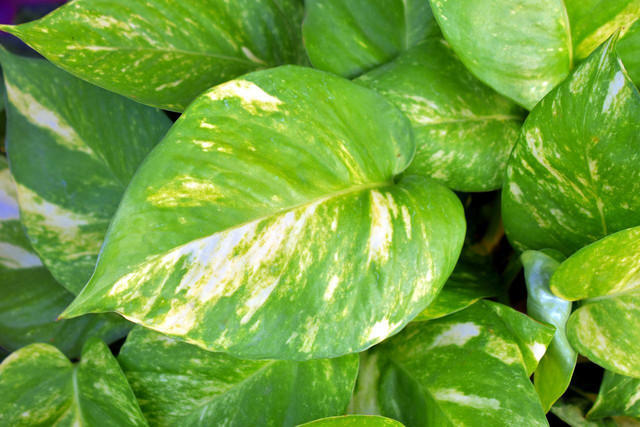


(Foto: CC0 / Pixabay / SandeepHanda)
Not all plants planted in jars need seeding, soil and good drainage. There are some plants which can be potted in jars simply using a cutting from a larger plant and some water. This allows you to monitor the root growth of the plant and requires minimal upkeep.
Pothos are such plants, and are really good for those of us who tend to forget about watering our plants. With a Pothos plant, simply place a cutting in a jar of water and place it in a well-lit space. You can leave it there to grow and thrive, and just have to swap the water every couple of days. Once it has grown big enough, you can repot the pothos plant if you want to.
8. Snake Plant
Snake plants, just like pothos plants, can be placed in a jar of water and left alone to grow provided you change the water every few days, or even it gets discolored. These plants are an especially pretty addition to your jar-plant garden, as they grow big and beautiful green and yellow leaves that are sure to brighten up your home.
9. English Ivy
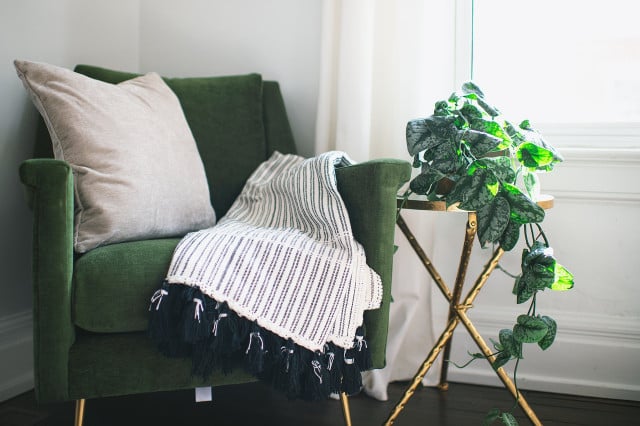


(Foto: CC0 / Pixabay / Space_Zandria)
English Ivy is another example of a plant whose cutting can simply be added into a jar of water. The ivy will grow well and requires no fuss. All it will need is to be placed somewhere it gets lots of light. Growing English Ivy in a jar this way will not only encourage its growth for future potting outdoors, but equally works as a beautiful side-table decoration or even a delicate table setting for a party.
It is best to use rain, pond, or well water for all those plants, just like for water your plants normally. If you can only use tap water, try and let it sit overnight before you use it to water plants or place plants in it.
Plants You Should Not Grow in Jars
The key similarity of plants which are best to grow in jars, is that they are small and require little upkeep and maintenance. This means that many other indoor plants cannot be planted in jars. This is especially true for edible plants, which generally require lots of space, water and light to grow. Vegetables like lettuce, carrots, cabbage and larger tomatoes cannot be grown from jars. If you still want to try and grow some veggies, check out our list of 10 easiest vegetables to grow at home or learn how to grow vegetables from scraps.
Other plants like Lady Palm, Peperomia, the Yucca plant and Rubber plant, are all beautiful indoor plants, but are too large for smaller jars.
Read more:
- Best Indoor Hanging Plants to Decorate Your Home
- Homemade Plant Food: Tips For Helping Wilted Plants
- 7 Signs of Overwatering Plants & What To Do
Do you like this post?






